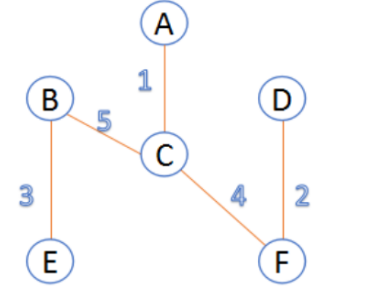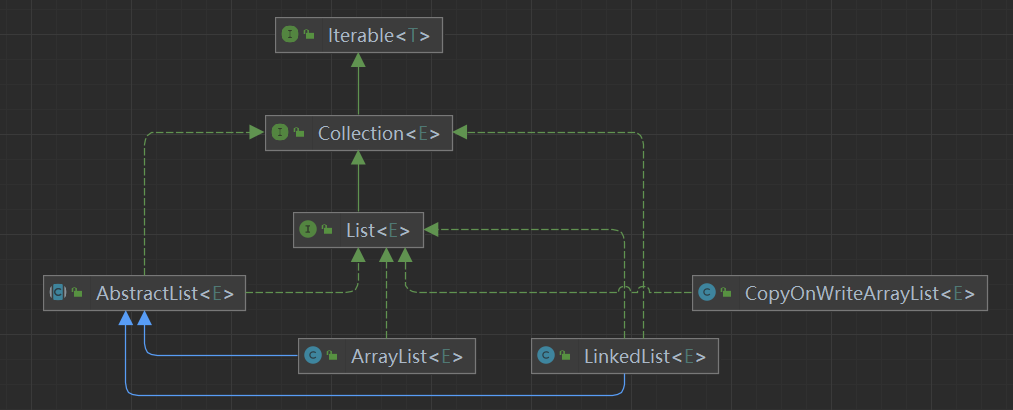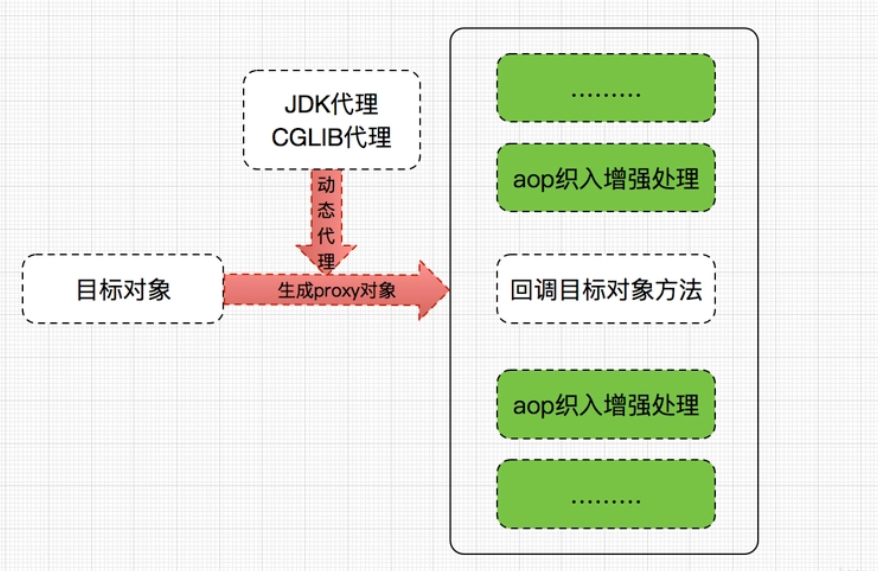第k大个数
导言
寻找数组第K大数是大厂面试中经常考到的一题,有的小伙伴会直接用sort()进行排序,两行代码解决,这样看似可行,实则掉入了出题人的陷阱。面试官希望看到的是你对算法的理解,而不是函数的调用。
我们都知道,排序算法的复杂度是$O(nlogn)$,挑选最大值的算法是遍历一遍,复杂度为$O(n)$。
对于第k大个数这种情况,既然不能用排序的话,我可以扫描k次,从而求解,复杂度为$O(kn)$。代码如下:
1
2
3
4
5
6
7
8
9
10
11
12
13
14
15
16
| class Solution {
public:
int findKthLargest(vector<int> a, int n, int k) {
for(int i=0; i<k; ++i) {
for(int j=0; j<n-i-1; ++j) {
if(a[j]>a[j+1]) {
int temp = a[j];
a[j] = a[j+1];
a[j+1] = temp;
}
}
}
return a[n-K];
}
};
|
这个和冒泡排序的思想是一样的,对于第一层每一趟for循环的i(i的范围是[0,k]),都挑出区间[0,n-i)最大的元素,并将其放到末尾的位置。
当k为1时,复杂度为$O(n)$,k为n的时候,复杂度变为了$O(n^2)$。这个算法还有优化的空间。
堆排序
对于第k大的数,我们可以理解成是前k个大的数中最小的那个,因此我们可以建立一个k大小的小顶堆,然后对数组进行遍历,依次将其与堆顶元素进行比较,那么最终遍历完成之后,第k大的数将处于堆顶的位置。代码如下:
1
2
3
4
5
6
7
8
9
10
11
12
13
14
15
16
17
18
19
20
21
22
23
24
25
26
27
28
29
30
31
32
33
34
35
36
| class Solution {
public:
void heap_adjust(vector<int>& nums, int i, int n) {
int j = 2*i+1;
while (j < n) {
if (j + 1 < n && nums[j+1] < nums[j]) j++;
if (nums[j] < nums[i]) {
swap(nums[i], nums[j]);
i = j;
j = 2*i+1;
} else {
break;
}
}
}
int findKthLargest(vector<int>& nums, int k) {
vector<int> heap(nums.begin(), nums.begin() + k);
for (int i = (k-1) / 2; i >= 0; --i) {
heap_adjust(heap, i, k);
}
int n = nums.size();
for (int i = k; i < n; ++i) {
if (heap[0] < nums[i]) {
heap[0] = nums[i];
heap_adjust(heap, 0, k);
}
}
return heap[0];
}
};
|
当然手写堆比较麻烦,我们可以直接用优先队列。
1
2
3
4
5
6
7
8
9
10
11
12
13
14
15
16
17
18
| class Solution {
public int findKthLargest(int[] nums, int k) {
int n = nums.length;
Queue<Integer> pq = new PriorityQueue<Integer>();
for (int i = 0; i < k; i++) {
pq.offer(nums[i]);
}
for (int i = k; i < n; i++) {
if (pq.peek() < nums[i]) {
pq.poll();
pq.offer(nums[i]);
}
}
return pq.peek();
}
}
|
空间复杂度$O(k)$,时间复杂度$O(n)$
快速选择
快排我们知道,就是通过划分,使两边整体有序,然后继续不停地划分,当所有小的区间都整体有序的时候,就排好了。
快速选择是建立在快排基础上的,通过划分得出位置loc,可以保证loc两边元素的大致位置,然后我们就知道第k个数处于哪个,然后再对该区间进行考虑。相当于每次少了一半的子问题,复杂度降为了$O(n)$(这个大家可以自行推导一下)。
代码如下:
1
2
3
4
5
6
7
8
9
10
11
12
13
14
15
16
17
18
19
20
21
22
23
24
25
26
27
28
29
30
31
32
33
34
35
36
37
38
| class Solution {
public int findKthLargest(int[] nums, int k) {
int n = nums.length;
int l = 0, r = n-1;
while (true) {
int loc = quickSelect(nums, l, r);
if (loc == n-k) {
return nums[n-k];
} else if (loc > n-k) {
r = loc-1;
} else {
l = loc+1;
}
}
}
private int quickSelect(int[] nums, int l, int r) {
int i = l, j = r+1;
while (true) {
do {
j--;
} while (j > i && nums[j] >= nums[l]);
do {
i++;
} while (j > i && nums[i] <= nums[l]);
if (j > i) {
int t = nums[j];
nums[j] = nums[i];
nums[i] = t;
} else {
int t = nums[j];
nums[j] = nums[l];
nums[l] = t;
return j;
}
}
}
}
|
这里有两个要注意的地方,quickSelect函数体中的else部分,最终是和右指针j进行交换,而不是左指针,因为右指针是先移动的,右指针移动到了i的位置以后,左指针会往右移动一格(因为是do-while循环),不在正确的位置上。也有可能右指针移动了以后,左指针移动到了j的位置,因此右指针最终的位置是对的,而左指针的位置有可能在右指针的右边一格,有可能和右指针重叠。要想和左指针交换的话就得这么写:
1
2
3
4
5
6
7
8
9
10
11
12
13
14
15
16
17
18
19
20
21
22
23
24
25
26
27
28
29
30
31
32
33
34
35
36
37
38
39
40
41
42
43
| class Solution {
public int findKthLargest(int[] nums, int k) {
int n = nums.length;
int l = 0, r = n-1;
while (true) {
int loc = quickSelect(nums, l, r);
if (loc == n-k) {
return nums[n-k];
} else if (loc > n-k) {
r = loc-1;
} else {
l = loc+1;
}
}
}
private int quickSelect(int[] nums, int l, int r) {
int i = l, j = r+1;
while (true) {
do {
j--;
} while (j > i && nums[j] >= nums[l]);
do {
i++;
} while (j > i && nums[i] <= nums[l]);
if (j > i) {
int t = nums[j];
nums[j] = nums[i];
nums[i] = t;
} else if (i > j){
int t = nums[i-1];
nums[i-1] = nums[l];
nums[l] = t;
return i-1;
} else {
int t = nums[i];
nums[i] = nums[l];
nums[l] = t;
return i;
}
}
}
}
|
第二个要注意的地方,还是要强调一下for、while、do-while循环。这三个循环都有个共同之处,就是循环正常结束完以后的的状态和循环的状态是正好相反的,也就是结束的终点是一致的。举个例子:
1
2
3
4
5
6
| do {
j--;
} while (j > i && nums[j] >= nums[l]);
|
do-while和for、while也有不同之处:do-while循环的起点一般是要遍历的开始位置的前一个位置,而while循环和for循环的起点都是要遍历的开始位置,这也就是为什么while循环和for循环用的更多一点。
看似是一个比较基础的东西,但实际写代码的时候很多人犯错,尤其是写双指针的时候,所以一定要注意。



